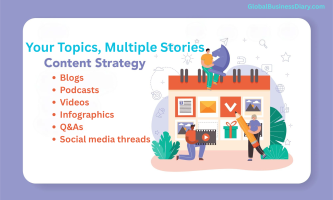Cleaning Up Your Online Footprint: Tips For Removing Unfavorable Google Search Results

Your online reputation is just as important as your offline reputation. Just as people judge you based on your behavior and actions in real life, they also think of you based on what they can find about you online.
Google is usually the first place people go whenever they want to look up information about a person or a business. That’s why if you have unfavorable Google search results, it’s essential to clean it up.
Cleaning up your online footprint is essential for job-seekers, business owners, public figures, and anyone who wants to protect their personal and professional reputation. Here are some tips on how you can remove from Google these unwanted search results and take control of your online presence.
What Is Digital Footprint?
Digital footprinting is the accumulation of different activities carried out online. You may think about the routine things each day. You may be posting on social media, making a purchase, activating an account, or completing a survey of the shared article. A digital trial leads these actions.
It may take into account your IP address and, at the same time, the personal details of your life that you have shared online. It may put the area and zip codes where you connect to the forefront.
Marketers, issuing cards, law enforcement agencies, and other business entities can track and analyze the data to adopt the culture and create a customized profile. In short, your digital footprint is similar to the footprints that you have left for others to see.
The Good And The Bad Of Digital Footprints
The digital footprint can indeed be beneficial. It can enhance your online time by providing a more personalized experience. Again it can help you create a positive footprint of yourself for the others that you wish to impress.
It can be your boss, prospective employees, or college admission officers through shaping your image with the help of messages, photos, and other information you provide on social media or other platforms.
But to every positive development, there is a but. Yes, you got it right; digital footprinting can also lead. Cybercriminals can exploit your footprints to open more targeted social engineering schemes like phishing attacks and also scams directed against you.
Create Positive Content
One effective way to push down unfavorable Google search results is to create positive content that dominates the search results. You can create and publish content such as blog posts, social media posts, videos, and images that showcase your skills, achievements, and valuable insights.
You can also update your LinkedIn profile or create a website highlighting your expertise and achievements. By consistently producing high-quality content, you tell Google and other search engines that this content is relevant and valuable, improving your online reputation.
Request Removal
If you find content online that you want to remove, your first action is to contact the website owner and request that they remove it. Most websites have a contact form or email address that you can use to get them.
Be polite and provide a clear reason why you want the content removed. If the website owner refuses to remove the content, your next step is to request to remove Google search results from their search engine.
Google has a set of guidelines that they follow when considering removal requests. If your request meets their policies, they will commit to guaranteed removals of the search results.
Use Privacy Settings

Using privacy settings on your social media accounts can help you control what information about you is visible to the public. By adjusting your privacy settings, you can choose who can see your personal information, such as your email address, phone number, location, and other sensitive data.
Make sure you only share personal information with people you trust and limit the amount of personal information you post publicly online.
Monitor Your Online Presence
It’s essential to regularly monitor your online presence to identify any unfavorable search results that may hurt your reputation. You can use Google Alerts, a free tool that allows you to receive email alerts whenever your name or your business name appears in search results.
By monitoring your online presence, you can quickly respond to any negative content and take steps to remove it.
Work With A Reputation Management Team
If you have serious problems with your online reputation or you need more time and knowledge to manage your online presence effectively, it’s best to hire a reputation management team.
A good reputation management team can help you remove unfavorable search results, create positive content, and monitor your online presence. They can also provide a strategy to improve your online presence and help you achieve your goals.
Search For Yourself
Doing an online search about yourself may seem a bit vain. But it’s a great way to observe the types of information that is available readily about you. You can try this with the different search engines and then explore the first several pages of results.
Another important activity is that you can keep track of the online mentions after performing your searches. You can do it by setting up alerts to keep track of your online mentions.
This helps eliminate the results from others with the same name; you have to add the keywords that are associated with you to your searches. Apart from all these measures, cleaning up online footprinting involves using tighter privacy settings, being cautious with social media, and restricting mobile app permissions.
Final Thoughts
Your online reputation is your gateway to success. By cleaning up your online footprint and taking control of your online presence, you can build a positive image that impresses potential employers, clients, and business partners.
Remember, taking proactive steps to manage your online reputation is always better than trying to fix it after something damaging has happened. By following these tips, you can effectively manage your online reputation and achieve your personal and professional goals.
Read Also:













